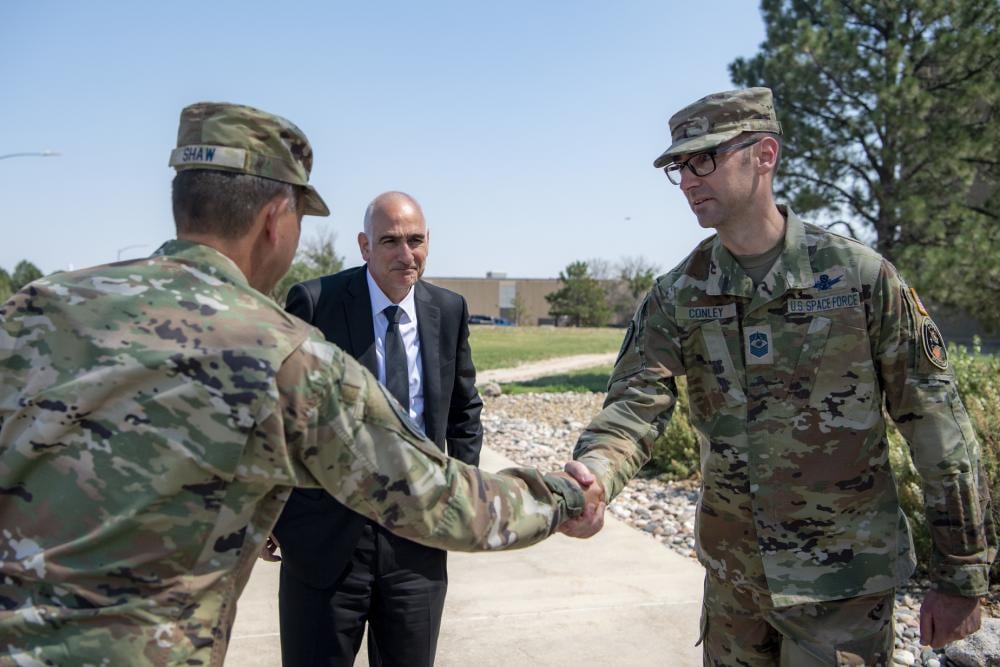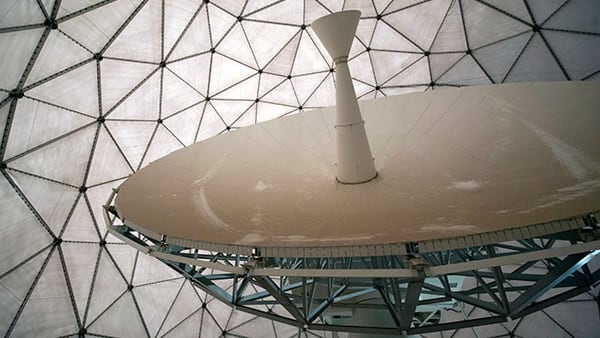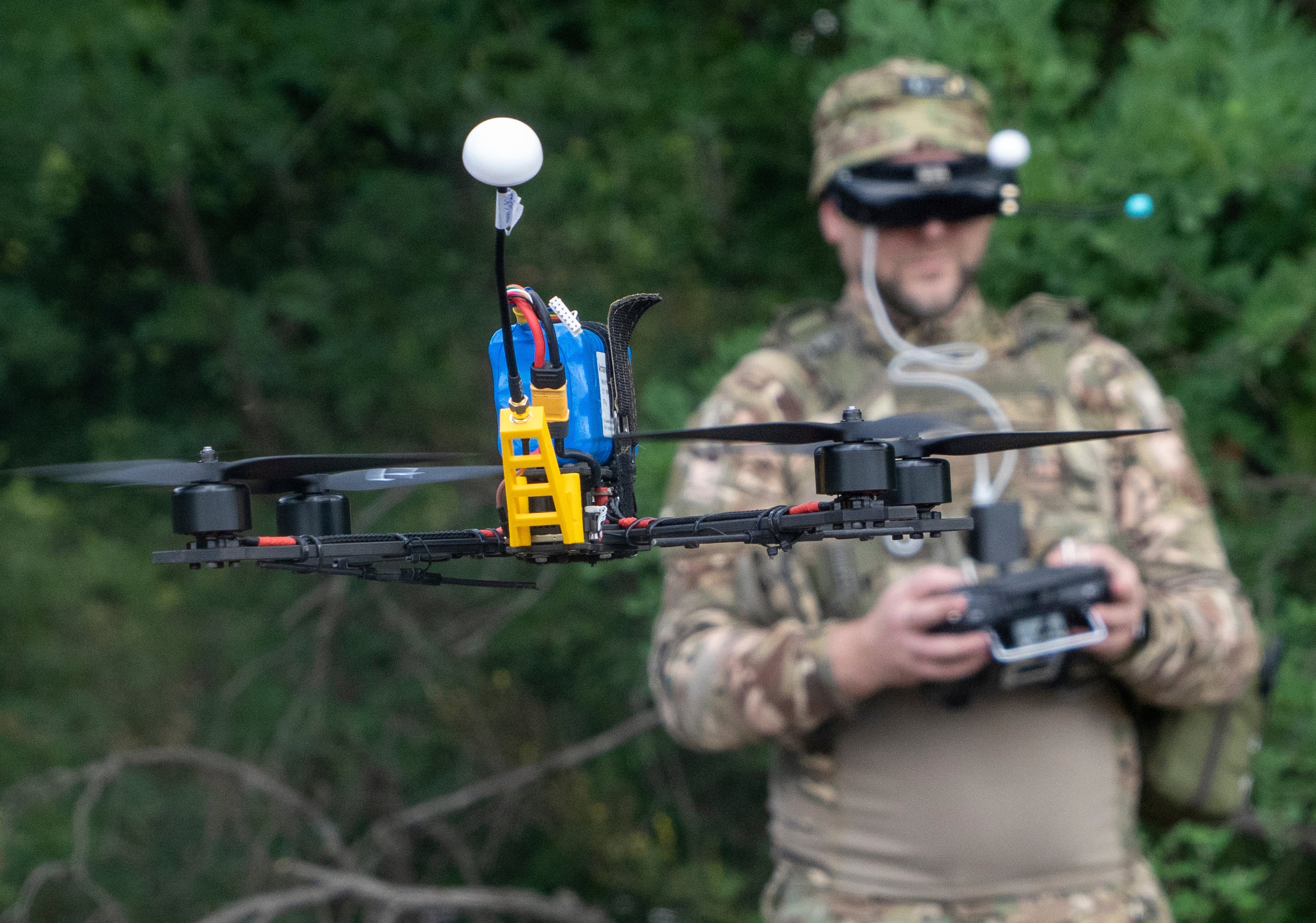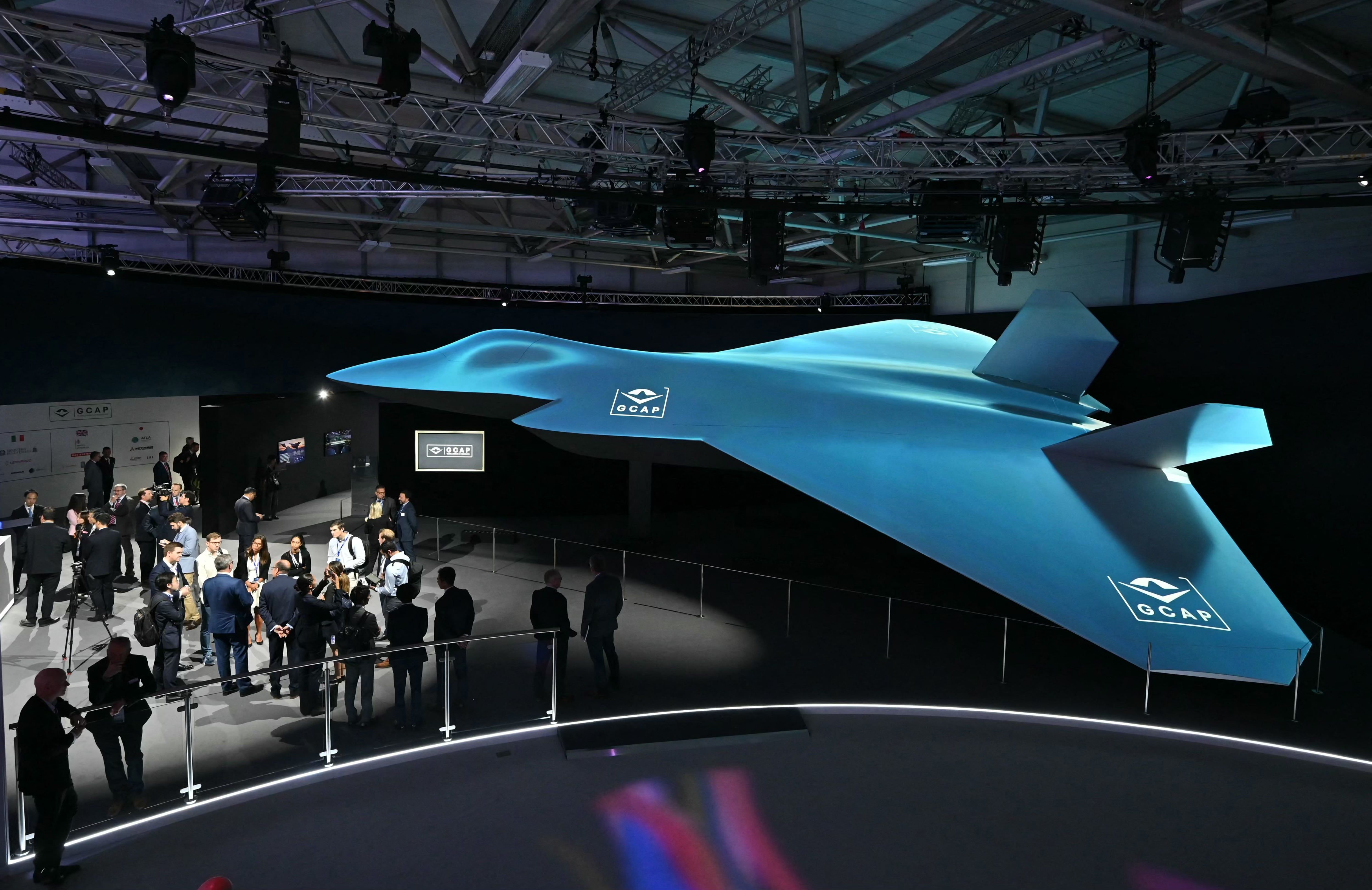WASHINGTON — The Space Force will not meet its target to deliver three long-delayed programs by the end of this year, despite a push from the service’s top acquisition official.
The projects include the Next Generation Operational Control Segment, or OCX, an in-demand ground system designed to operate modern GPS satellites; the Advanced Tracking and Launch Analysis System, dubbed ATLAS, a key space command-and-control system; and the Military GPS User Equipment program, MGUE, which is developing cards that enable anti-jam capabilities for GPS receivers.
“The current schedule for all three programs indicate they will not deliver in 2023,” Space Force spokeswoman Laura McAndrews told C4ISRNET in an Oct. 20 statement.
Since being named the first assistant secretary of the Air Force for space acquisition and integration last year, Frank Calvelli has challenged the Space Force to move faster to develop and acquire new systems. He’s issued a list of nine “tenets,” or guideposts, for acquisition programs, which calls for smaller and simpler designs, greater use of existing technology, improved coordination between contractors and government program managers and accountability for poor performance.

He’s also set a goal of delivering the ground systems that support satellite operations, data processing and decision-making on faster timelines — a long-time challenge for the service.
Calvelli’s first public push for these “long-standing, troubled programs” to achieve their fielding targets came in January. Speaking at a National Security Space Association conference, he said delivering these systems was a high priority.
“These albatrosses . . . have been dragging the department down for decades,” Frank Calvelli said Jan. 24 speech at a National Security Space Association Conference. “This is the year we’re going to get these programs delivered.”
Ten months later, not only are the programs unable to meet their end-of-year goal, they have accumulated additional delays over the last year that will push their delivery into next summer.
Persistent uncertainty
OCX was originally slated to field in 2016, but schedule uncertainty has been a persistent challenge for the program.
RTX, formerly Raytheon Technologies, is developing the system and delivered the first capability increment, Block 0, in 2017. Block 0 can support launches of GPS III satellites, the newest variant of the system, but can’t operate them once in orbit. Blocks 1 and 2 will provide that capability along with better performance and protections against cyber threats.
The program’s previous schedule called for blocks 1 and 2 to be delivered last January, but technical issues discovered during software testing delayed that plan until next spring. The service now expects OCX to deliver in June of 2024, according to McAndrews.
The Government Accountability Office said in a June report that a technical issue with the GPS System Simulator used for testing also contributed to the delivery delay.
RTX did not immediately respond to a request for comment.
McAndrews said the service has “increased the frequency of senior level engagements” on the program, indicating those measures have “motivated changes in the vendor’s staffing posture as well as improvements in their test procedures and approach.”
While OCX development is led by a prime contractor, Space Systems Command serves as the lead integrator for the Space Command and Control program, which includes ATLAS.
Space C2 is comprised of several other hardware and software development efforts, but it’s the analysis and data processing capabilities from ATLAS that will allow the Space Force to decommission its 1970s-era Space Defense Operations Center, known as SPADOC.
The baseline capability for ATLAS, developed by L3Harris, is slated for delivery next August, McAndrews said. The service had previously expected the program’s minimum viable capability release at the end of this year, a milestone that had already been delayed from late 2022.
Once delivered, the system will enter a trial period before it’s validated for operations. The schedule for that trial phase is still being finalized, McAndrews said.
ATLAS development challenges are largely linked to the difficulty of coordinating the many capabilities that make up the Space C2 system, which is the Space Force’s role as the prime integrator. To address those issues, the service last year implemented a systems engineering and integration team and shifted personnel to focus on ATLAS delivery.
‘Working collaboratively’
In a statement to C4ISRNET, L3Harris said the company is “working collaboratively” with the Space Force to complete the ATLAS capabilities required for initial operations by next August. In the meantime, the company has been making incremental deliveries, recently beginning its fifth such test event with SSC and the 18th Space Defense Squadron, the company said.
“We will continue collaborating with all parties to help meet timelines associated with SPADOC decommissioning and build upon the recent successes of our software deliverables,” spokeswoman Christina Hoggatt said in an Oct. 24 statement. “The community continues to work collaboratively to ensure capability transition and reliability are top of mind for delivery to the warfighter.”
RTX and L3Harris both have a role in MGUE, a phased effort to make the GPS receivers used across the services more resilient against enemy jamming and spoofing attempts. For Increment 1, L3Harris is developing the receiver cards for land systems and RTX is providing the aviation and maritime cards.
Increment 1 development began in 2017, and has faced continued development challenges linked, in part, to changing production plans. A June report from GAO highlighted progress on the effort, but warned that delays in the first increment’s integration could impact other parts of the program.
L3Harris has completed development of the ground cards, which are now being integrated and fielded. McAndrews said the maritime and aviation cards were certified last April to start testing and are expected to complete their final milestones next year. Specifically, the aviation card should be certified to begin operational test on the B-2 bomber in July and the maritime card on the Arleigh Burke-class destroyer next October.
She said the program is “executing to its current acquisition program baseline.” Like on OCX, officials are closely monitoring the effort “to ensure compliance with performance standards.”
Performance accountability
The Space Force didn’t provide details about what measures the service has taken to hold the companies accountable for any cost increases and schedule delays that are linked to their performance, though L3Harris said its contract terms and fee structures for ATLAS “remain unchanged.”
Asked whether RTX or L3Harris had been placed on the Contractor Responsibility Watch List — established in the Fiscal 2018 National Defense Authorization Act as an acquisition oversight tool — McAndrews said the service “doesn’t comment publicly on specific Space Contractor Responsibility Watch List actions.”
The Space Force can place companies on the list for schedule and performance issues and could bar them from receiving new work.
Calvelli has indicated he would make use of the list when it’s warranted. In a November 2022 memo, he instructed the acquisition workforce to “not tolerate [the] bad performance that we have seen in some traditional large satellite and large ground . . . contracts.”
“Take corrective action and consider all tools available for poor performers including loss of fee, use of the Contractor Responsibility Watch List, and if necessary, stopping programs,” he wrote. “Industry works for you, so be a demanding customer.”
Moving forward, Calvelli is working with the space acquisition community to take a different approach to developing ground systems. Rather than field large, complex capabilities all at once, he wants programs to focus on smaller requirement sets that can deliver at a faster pace.
One example is the Rapid Resilient Command and Control program, or R2C2. The effort is an outgrowth of Space Systems Command’s Enterprise Ground Services program, or EGS, and the Space Rapid Capabilities Office’s Ground Command, Control and Communications program.
EGS, in particular, sought to bring together the service’s disparate network of ground command-and-control systems, but according to officials, its scope was too broad. In an attempt to narrow the program’s focus and deliver the capability more quickly, Calvelli reduced its requirements and shifted the program to the Space RCO in February.
Col. Greg Hoffman, director of the Space RCO’s strategic capabilities acquisition delta, said during an Oct. 19 Space Industry Day event that while past programs tried to “take on everything at once,” R2C2 and other ground programs moving forward will take a more simplified approach.
“Whereas legacy programs tried to take on a lot of scope, a lot of complexity, [and] focused on the entirety of the Space Force mission, we are simplified in our direction,” he said. “Right out of the chute, we have a much simpler problem to solve.”
Courtney Albon is C4ISRNET’s space and emerging technology reporter. She has covered the U.S. military since 2012, with a focus on the Air Force and Space Force. She has reported on some of the Defense Department’s most significant acquisition, budget and policy challenges.








